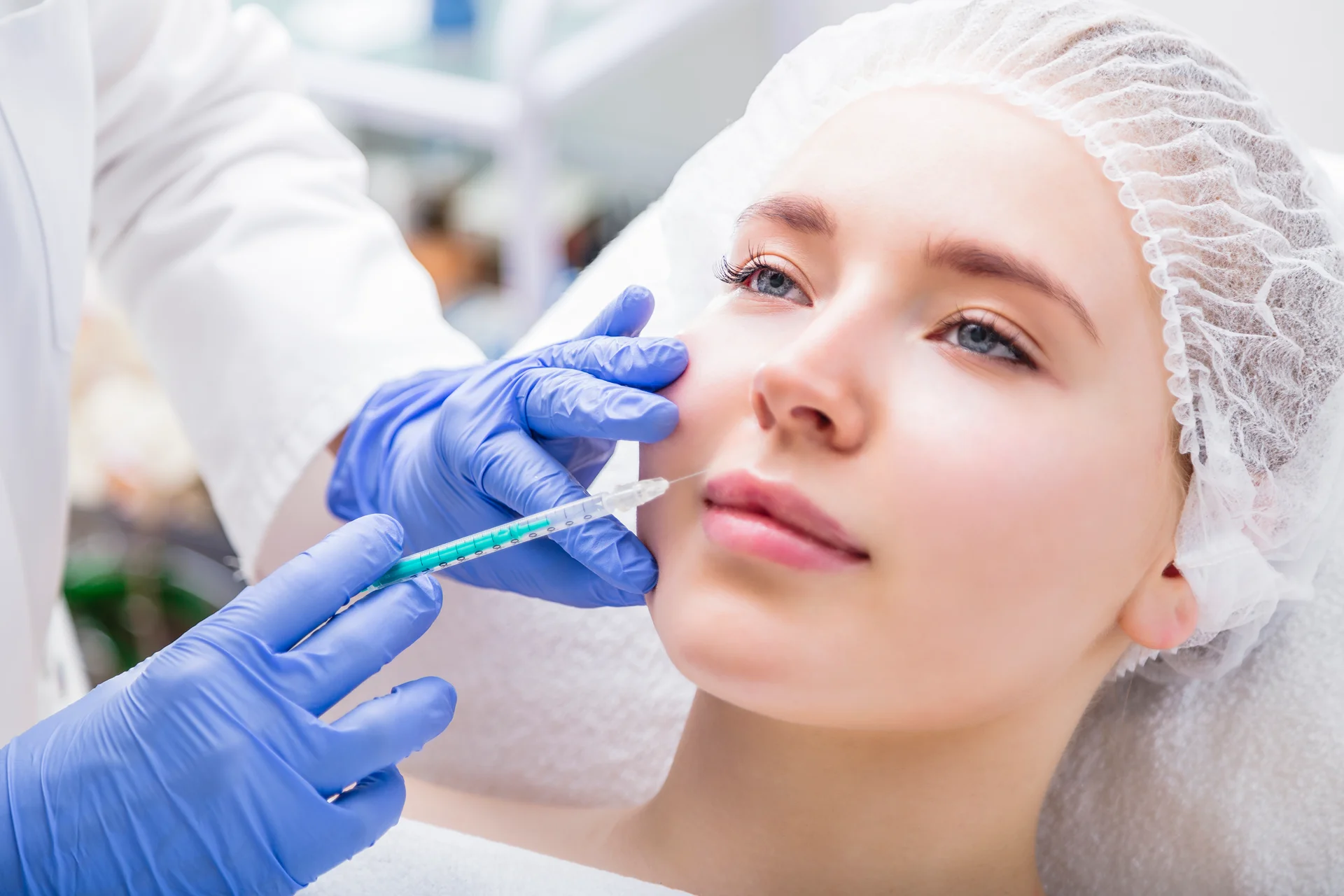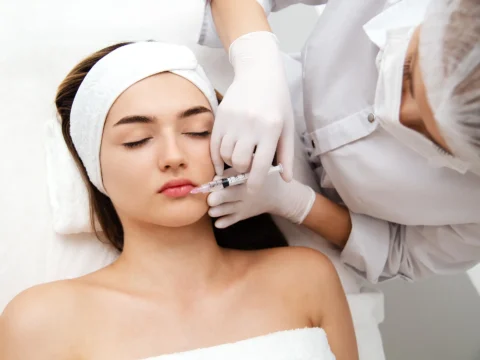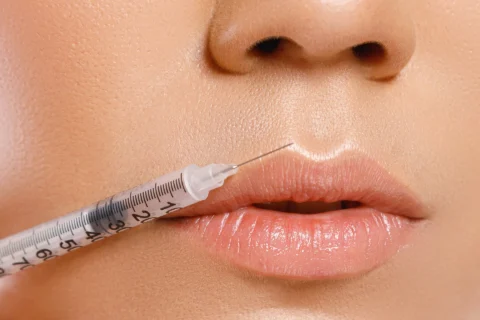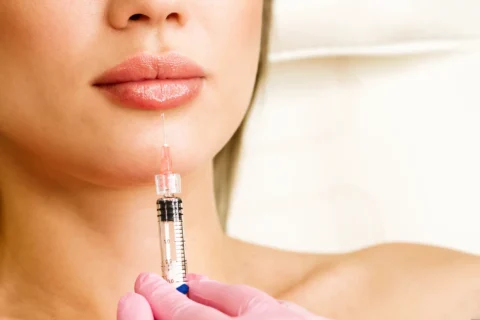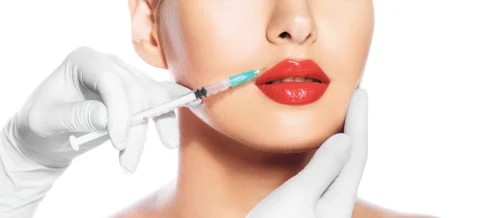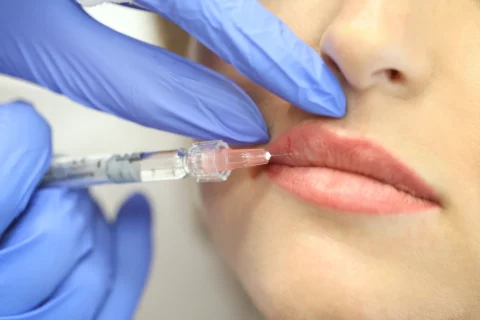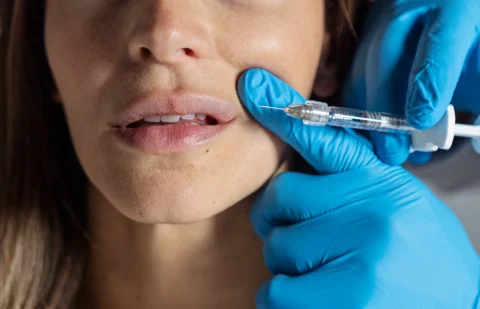The answer may surprise you and could make all the difference for your perfect pout.
Hyaluronic lip fillers typically last between 6 months to a year, depending on individual factors such as metabolism and application method.
To maintain your ideal pout, it’s important to consider regular touch-up appointments with your provider.
- Hyaluronic lip fillers typically last 12 to 18 months.
- Factors such as metabolism, injection technique, and filler quality can affect the longevity of results.
- Collagen-stimulating fillers may provide longer-lasting effects.
- Choosing a reputable brand and discussing injection techniques with a qualified professional can help achieve desirable outcomes.
How do Hyaluronic Lip Fillers Work?
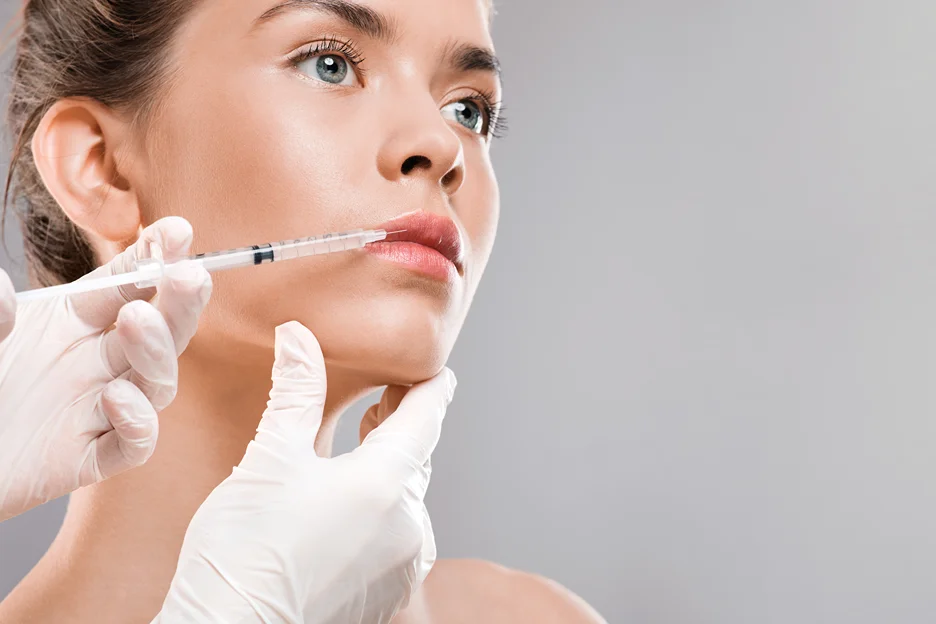
Hyaluronic acid, a substance naturally found in the body, is the key component of these fillers. It has the remarkable ability to attract and retain significant amounts of water, providing a plumping effect when injected into the lips.
This results in a natural-looking enhancement that supports lip tissue and corrects asymmetries.
The application process, whether through injections or non-needle hyaluronic pens, is relatively
Factors Affecting Filler Longevity
When it comes to the longevity of your lip fillers, your body’s metabolism plays a significant role.
The technique used for injection and the quality of the filler product can also impact how long your results last.
Does Metabolism Affect How Long Hyaluronic Lip Fillers Last?
Metabolism plays a crucial role in the breakdown and absorption of fillers, affecting how long they last in your lips.
A person’s metabolism does affect how long hyaluronic acid-based dermal fillers like those used for lips will last, with faster metabolisms resulting in shorter durations of 6-9 months on average versus 9-12 months for slower metabolisms.
How Does Injection Technique Influence Hyaluronic Lip Fillers Longevity?
The injection technique used by the practitioner can influence how long hyaluronic acid (HA) lip fillers last. Some key factors include:
Layering technique: Injecting the HA in multiple thin layers just under the skin rather than in one large bolus allows the filler to integrate more naturally with the surrounding tissues. This layering technique may result in fillers lasting longer.
Avoiding overcorrection: Overfilling the lips can cause the filler to dissipate more quickly as the tissues are unable to integrate it properly. Practitioners aim for a subtle, natural result to maximize longevity.
Massaging after injection: Gently massaging the injected area immediately after can help spread the HA more evenly and prevent lumps or bumps. Massaging may also allow the filler to last slightly longer.
How Does Brand and Quality Affect Longevity of Hyaluronic Lip Fillers?
Variances in product quality is essential for comprehending the factors that affect the longevity of hyaluronic lip fillers.
- The quality of hyaluronic acid fillers can vary, impacting how long the filler can last in your lips.
- Different brand names may offer fillers with varying properties, affecting the outcome of the lip filler procedure.
- The type of filler used, including its material and consistency, can influence the duration of the results.
Understanding the variances in product quality is essential for comprehending the factors that affect the longevity of hyaluronic lip fillers.
Application Methods for Lip Fillers
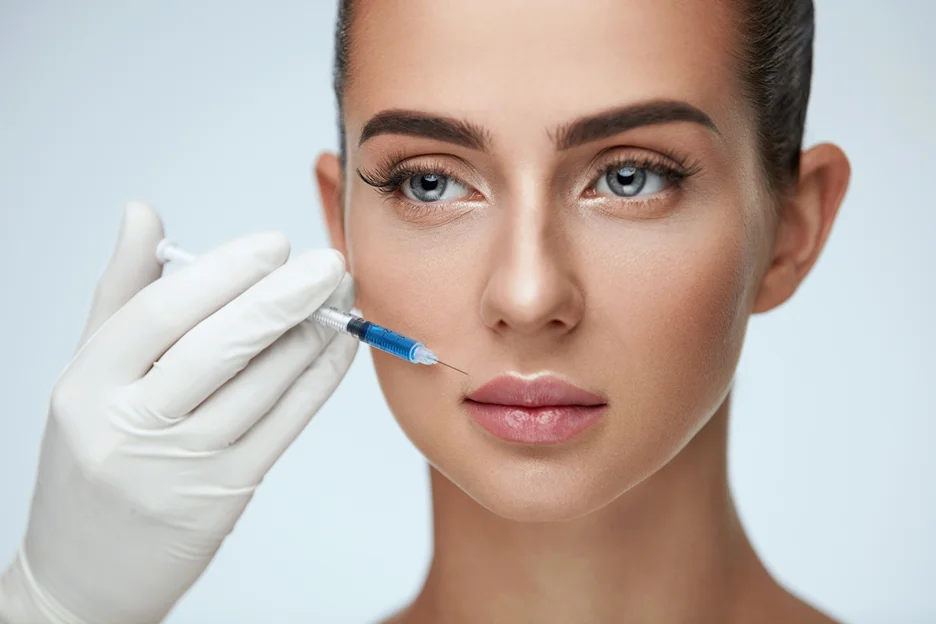
Injections involve the use of fine needles or thin cannulas and may require numbing cream for comfort.
On the other hand, non-needle hyaluronic pens provide an option for those averse to needles, using high-pressure bursts of HA to achieve the desired results.
Injection Techniques
For achieving the desired volume and shape, precise application techniques are essential for lip fillers. When considering injection techniques for hyaluronic lip fillers, it’s crucial to understand the various methods used for this procedure. Here are some key points to consider:
- The use of FDA-approved injections or non-approved hyaluronic pens, each with its own application method, impacts the outcome of the filler.
- Techniques involving numbing cream, fine needles, or thin cannulas ensure precision and minimize discomfort during the procedure.
- Hyaluronic pen application methods deliver high-pressure bursts of HA without needles, but may carry inherent risks and are forbidden in certain countries.
Topical Application
Lip fillers, especially those containing hyaluronic acid (HA), often involve the use of a topical anesthetic. This numbing cream is applied before injections to minimize discomfort. Additionally, after the procedure, applying an ice pack can help reduce swelling and discomfort.
While some lip fillers offer a more natural look and last about 6 months, others, like Restylane and Juvederm, provide a natural lifted look for a longer duration.
Expected Duration of HA Fillers
The expected duration of HA fillers is generally 12 to 18 months. However, individual factors such as age and metabolism can influence the longevity of the results.
Younger individuals tend to metabolize hyaluronic lip fillers faster, potentially shortening the duration of their effects.
It’s important to note that while hyaluronic lip fillers can provide long-lasting results, they aren’t permanent and don’t halt the natural aging process.
To maintain the desired lip fullness, regular maintenance appointments every 12 to 18 months are necessary.
Lip Filler Aftercare
After getting hyaluronic lip fillers, ensuring proper aftercare is crucial for maintaining the longevity of your results. It’s essential to allow your lips to heal completely after the filler treatment to ensure longer-lasting effects.
Avoid excessive movement, tugging, or massaging of your lips to maintain the integrity of the fillers. Refrain from sleeping on your face or touching your lips frequently to prevent disrupting the filler.
Limit alcohol and blood thinners before and after the treatment to reduce swelling and bruising. Planning for regular maintenance treatments every 6 months can also help prolong the results of your lip fillers.
Potential Side Effects of HA Fillers
If you’re considering hyaluronic acid (HA) fillers, it’s important to be aware of the potential side effects that may occur after the procedure. Here are some common side effects to consider:
- Bruising, swelling, and redness at the injection site are common and usually resolve within a few days.
- Allergic reactions to hyaluronic acid fillers are rare but possible and may present as itching, hives, or swelling.
- Mild discomfort, tenderness, or soreness in the lips may occur after the procedure.
Discuss these potential side effects with your healthcare provider before getting HA fillers.
Can Hyaluronic Lip Fillers Cause Allergic Reactions?
Hyaluronic acid (HA) fillers, including those used for lip fillers, can cause allergic reactions in some individuals, though these reactions are rare.
Possible allergic reactions to HA fillers include delayed hypersensitivity reactions, persistent swelling or asymmetry, and rashes.
The exact mechanisms are not fully understood, but residual proteins from the manufacturing process and previous exposures may cause hypersensitivity to the filler material.
Popular Brands of Hyaluronic Lip Fillers
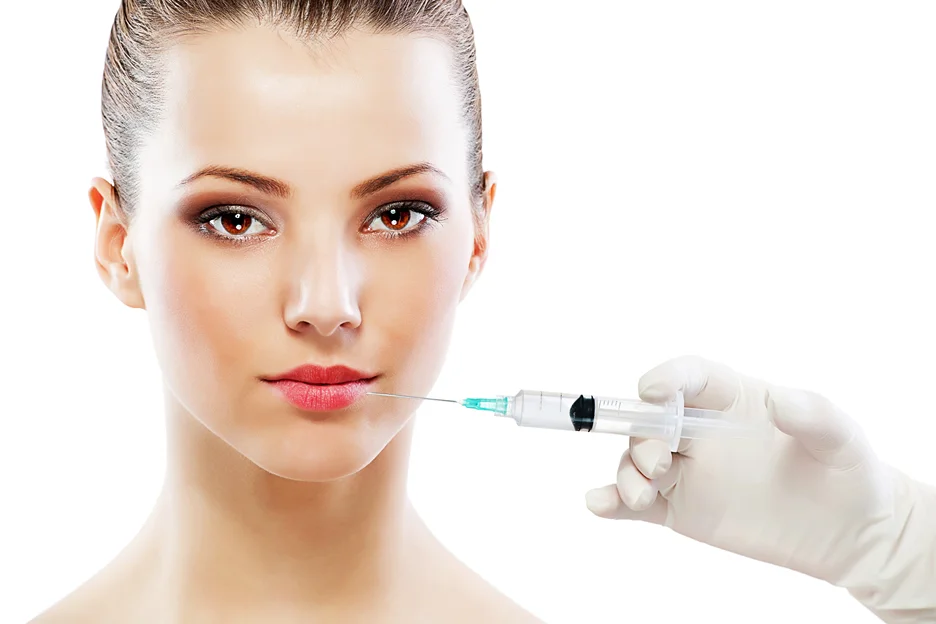
Research and consult with a qualified healthcare provider to determine which product best suits your needs and goals.
Some brands are known for lasting longer and providing natural-looking results. Here are a few popular brands of hyaluronic acid (HA) lip fillers to consider:
| Brand | Lasting Effectiveness | Notable Feature |
| Restylane Silk | Long-lasting | Designed specifically for |
| subtle lip enhancement | ||
| Juvederm | Natural-looking | Smooth gel for softer, |
| fuller lips | ||
| Belotero Balance | Smooth integration | Suitable for delicate |
| with natural tissue | lip areas | |
| Revanesse | Long-lasting | Fine-tuned for natural |
| lip definition |
It’s important to discuss your options with a professional to determine the best choice for your desired results.
How Much Do Hyaluronic Lip Fillers Cost?
- Initial Cost: The price of hyaluronic lip fillers typically ranges from $500 to $2,000 per syringe, depending on factors such as the provider’s expertise, location, and the amount of filler needed.
- Additional Fees: Consultation fees, follow-up appointments, and potential touch-up sessions may contribute to the overall cost.
- Package Deals: Some practitioners offer package deals for multiple sessions or combination treatments, which could potentially lower the overall cost.
Be sure to discuss maintenance treatments and schedule a follow-up with your provider to ensure the final results align with your expectations.
Recovery Period for Hyaluronic Lip Fillers
After getting lip fillers, you can expect some swelling and redness for about 24 to 48 hours.
It’s common to experience bruising around the lips for up to a week.
You may also notice some discomfort or difficulty smiling, but this should improve within a day or two.
Swelling After Fillers
During the recovery period for lip fillers, it’s common to experience swelling, typically lasting 24 to 48 hours, with full recovery potentially taking up to a week.
Here’s what you need to know about swelling after getting hyaluronic lip fillers:
- Application of ice packs can help reduce swelling and discomfort.
- Gently apply an ice pack to the lips for 15 minutes every hour during the first day.
- Avoid strenuous exercise and activities that may increase blood flow to the face to minimize swelling.
- Refrain from bending over or engaging in activities that increase blood pressure.
- Some side effects like redness, tenderness, and swelling are normal after getting lip fillers, but if you experience excessive or prolonged swelling, contact your provider immediately.
Healing Time After Fillers
It’s normal to experience some swelling, tenderness, and bruising at the injection site. The use of a topical anesthetic during the procedure can help minimize discomfort.
Attending follow-up appointments as recommended by your provider is crucial to ensure proper healing and assess the results. Here’s a table to provide a quick overview of the healing time for lip fillers:
| Healing Time | Expected Experience |
| 24-48 hours | Swelling, tenderness, bruising at the injection site |
How to Manage Lip Filler Discomfort
Use ice packs or cold compresses to alleviate any discomfort or swelling following your lip filler procedure.
You can also apply a topical anesthetic to the treated area to help manage any discomfort during the recovery period.
Here are some tips to help you manage discomfort after getting hyaluronic lip fillers:
- Apply an ice pack or cold compress to your lips for 15-20 minutes every hour for the first few hours after the procedure. This can help reduce swelling and discomfort.
- Use a topical anesthetic as directed by your healthcare provider to numb the treated area and minimize any potential discomfort. This can provide relief during the initial recovery period.
- Avoid strenuous physical activity and excessive sun exposure to prevent exacerbating discomfort and swelling.
How to Extend Lip Filler Effects?
Maximizing the longevity of your lip filler effects requires proper aftercare and attention to your overall health and lifestyle choices. To prolong the effects of hyaluronic lip fillers, it’s essential to follow the aftercare instructions provided by your injector.
Avoiding activities that may put pressure on the lips, such as excessive smiling or puckering, can help maintain the filler results. Additionally, protecting your lips from sun exposure by using SPF lip balm can prevent volume loss and preserve the effects of the lip fillers.
Staying hydrated and following a healthy diet rich in vitamins can also contribute to the longevity of your lip filler effects.
Consulting a Professional
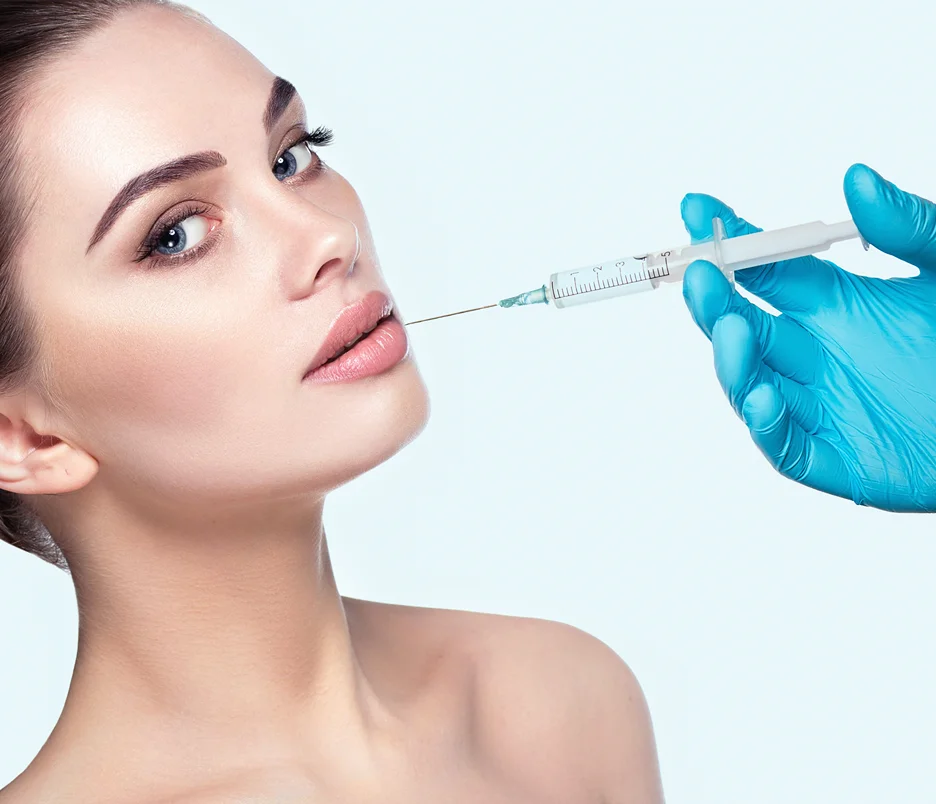
If you want to ensure the safety and effectiveness of your hyaluronic lip filler treatment, consulting a board-certified plastic surgeon or experienced healthcare provider is essential.
When considering hyaluronic lip fillers, seek professional consultation to discuss your desired look, potential risks, and realistic expectations of the procedure.
A qualified healthcare professional can provide personalized advice regarding the type of injection suitable for your lip enhancement goals.
Professional guidance is crucial for understanding the risks and potential side effects associated with lip fillers and to determine the most appropriate treatment plan.
Frequently Asked Questions
How Often Should You Get Hyaluronic Lip Filler?
You should get hyaluronic lip filler every 12 to 18 months for maintenance. Younger individuals might need maintenance appointments more frequently due to faster metabolism. Regular upkeep every 6 months can extend the results.
How Long Does Hyaluronic Pen Lip Filler Last?
Hyaluronic pen lip filler typically lasts between 6 months to 1-2 years, varying based on metabolism and filler type. Follow post-injection care guidelines for better results. Consider regular maintenance treatments every 6 months to prolong the effects.
How Long Do Hyaluronic Acid Fillers Last?
Hyaluronic acid fillers typically last between 6 months to 2 years, influenced by filler type, metabolism, and injection site. Allow lips to heal completely, avoid excessive movement, and limit alcohol for prolonged results.
Is Hyaluronic Acid Filler Good for Lips?
Yes, hyaluronic acid fillers are good for lips. They provide fuller, more defined lips with fewer wrinkles. The effects may take a couple of weeks to fully show and can last between 6 months to 2 years.

